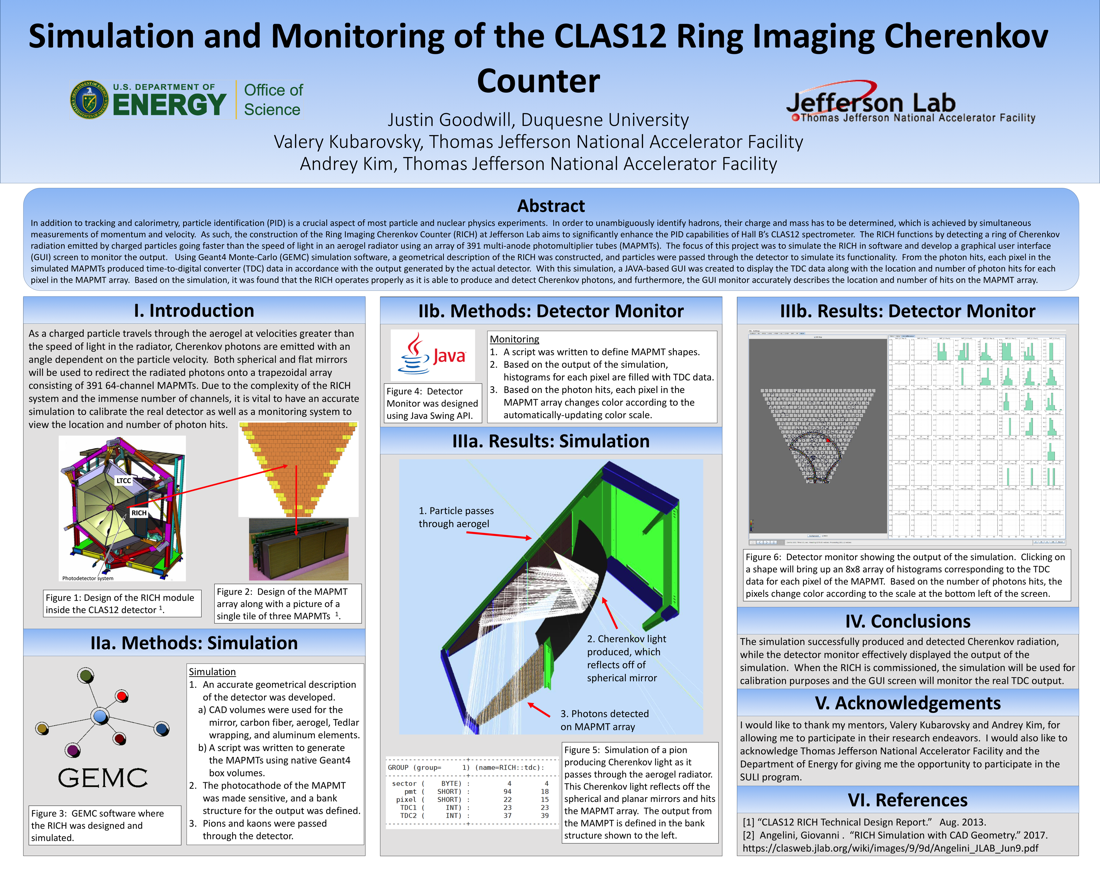Undergraduate Research at Jefferson Lab
Simulation and Monitoring of the CLAS12 Ring Imaging Cherenkov Counter
Student: Justin Goodwill
School: University of Pittsburgh
Mentored By: Valery Kubarovsky
In addition to tracking and calorimetry, particle identification (PID) is a crucial aspect of most particle and nuclear physics experiments. In order to unambiguously identify hadrons, their charge and mass has to be determined, which is achieved by simultaneous measurements of momentum and velocity. The construction of the Ring Imaging Cherenkov Counter (RICH) at Jefferson Lab aims to significantly enhance the PID capabilities of Hall B's CLAS12 spectrometer. The RICH functions by detecting a ring of Cherenkov radiation emitted by charged particles going faster than the speed of light in an aerogel radiator using an array of 391 multi-anode photomultiplier tubes (MAPMTs). The focus of this project was to simulate the RICH in software and develop a graphical user interface (GUI) screen to monitor the output. Using Geant4 Monte-Carlo (GEMC) simulation software, a geometrical description of the RICH was constructed, and particles were passed through the detector to simulate its functionality. From the photon hits, each pixel in the simulated MAPMTs produced time-to-digital converter (TDC) data in accordance with the output generated by the actual detector. With this simulation, a JAVA-based GUI was created to display the TDC data along with the location and number of photon hits for each pixel in the MAPMT array. It was found that the RICH operates properly in simulation as it is able to produce and detect Cherenkov photons, and furthermore, the GUI monitor accurately describes the location and number of hits on the MAPMT array.

Citation and linking information
For questions about this page, please contact Education Web Administrator.
